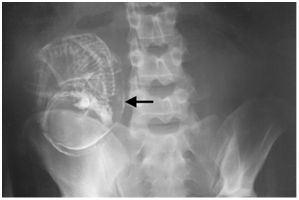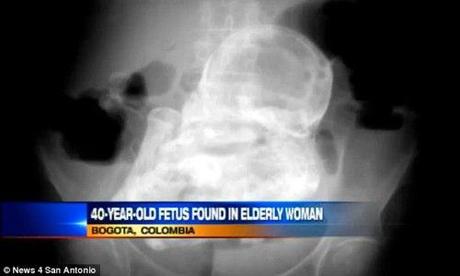Q: I am writing a story about a woman who, through sheer force of will, doesn’t allow her body to complete childbirth. The baby dies and becomes a lithopedia. My questions are:
Will there be bleeding in spite of the labor stopping? What happens to the placenta? Will the body absorb it or will it harden like some kind cocoon? Will the mother lactate? Will it cause the mother pain to carry the stone baby? Will the woman have periods? Is it plausible that the mother’s body will experience contractions years later? Or pains caused by the stone baby that she could believe are contractions? How long does it take the fetus to calcify into the lithopedia?
Nicole Nelson-Hicks, Nashville, TN
A: First of all, there is no way she could stop her pregnancy, labor, or delivery by simple force of will. The body will do what the body does and it will eject the fetus either as a stillbirth or a live child. There is no way to stop this.
Secondly, lithopedia (stone babies—singular lithopedion) tend to occur in abdominal pregnancies as opposed to intrauterine pregnancies, even though it is possible for the fetus to remain within the uterus. Conception actually takes place in the fallopian tube as the egg descends and the sperm rises – at least in most cases. A tubal pregnancy can result where the fetus grows within the fallopian tube and rarely the fertilized egg will escape the end of the fallopian tube and settle within the abdomen. Sometimes the blood supply is established and the child can grow within the abdomen. Rarely to term but it can grow. It would take 12 or so weeks for the fetus to reach a size that would be easily visible.

In this situation sometimes the tissues of the dead fetus are not absorbed by the body but rather become walled off with fibrous tissue and this can often then calcify which is where the term stone baby comes from.

Often the woman will have no knowledge of this whatsoever and women have lived late in life, and indeed very late in life, and not know this has occurred. It is often found on an abdominal x-ray that is taken for some other reason. But she could feel the discomfort or have some sensation of a mass or fullness in her abdomen and it could be discovered as a result of that.
If the pregnancy were outside the uterus and in the abdomen, as is most likely in these exceedingly rare circumstances, she would not lactate because those hormones don’t appear until very late in the pregnancy. She would most likely have normal periods, and could even become pregnant again since the uterus, ovaries, and fallopian tubes would be normal and would continue to function normally.
However, if the fetus remained within the uterus, this could interfere with future pregnancies, though not always. It would be very similar to a woman who had large fibroids, which are muscular masses that develop with in the muscular wall of the uterus and often cause pain and abnormal bleeding. Sometimes normal pregnancies occur despite these and that could be the case here.
It is possible that she could experience discomfort many years later with the fetus being located in either the uterus or the abdomen so that part of your story would work quite well.
In summary, this is an exceedingly rare circumstance and it is nothing that she could force to happen. Most likely it would be with an abdominal pregnancy but it could be an intrauterine pregnancy—though this would be even more rare. If an abdominal pregnancy, she could easily go through life normally and have other children and be completely unaware or she can develop symptoms later as I described above. If the pregnancy were intrauterine, she would likely have more symptoms and more likely be aware that something wasn’t right. But in either circumstance it would be possible for her to have normal periods and even become pregnant again.
